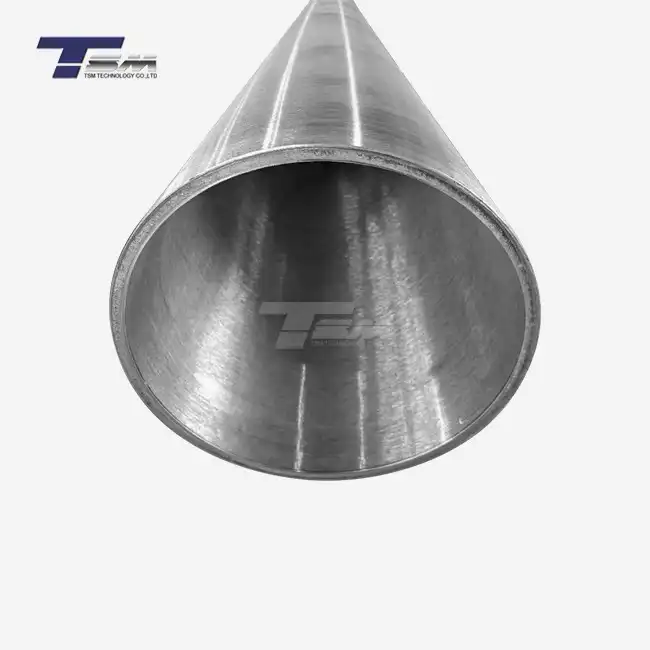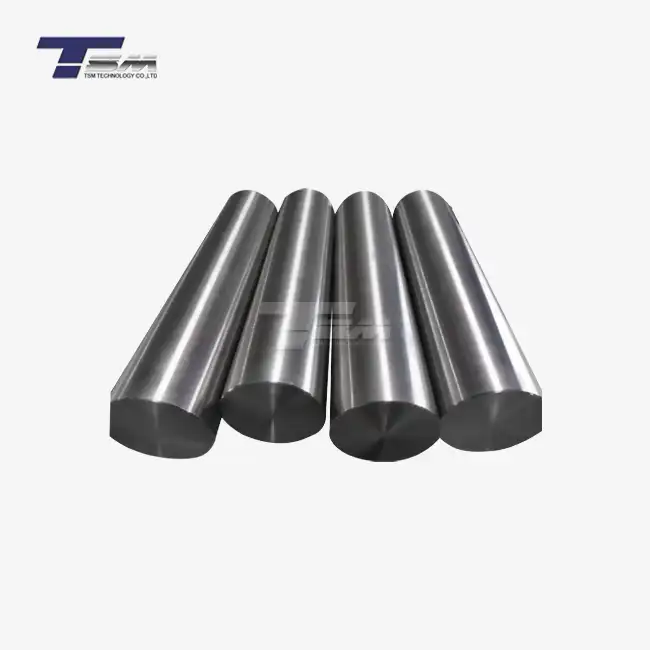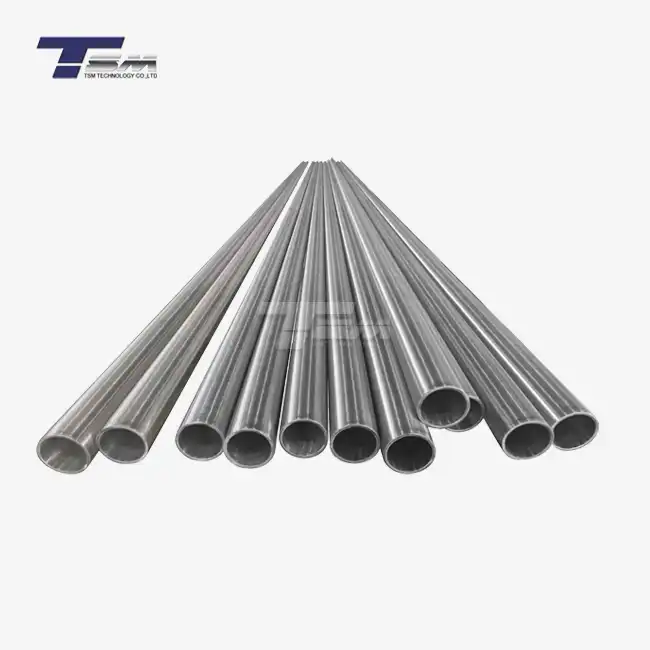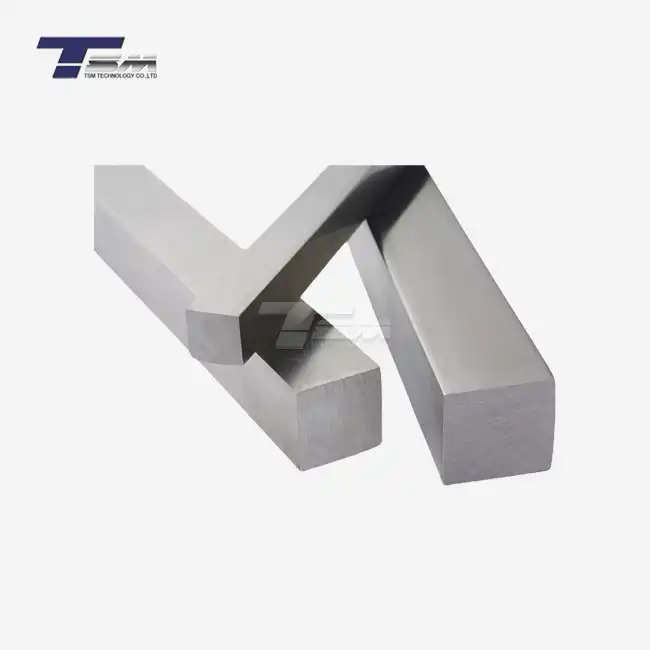Composition and Microstructure of Hastelloy C276 Round Bar
Chemical Composition
Hastelloy C276 round bar boasts a carefully balanced chemical composition that contributes to its exceptional properties. The alloy primarily consists of nickel (Ni) as the base element, with significant additions of molybdenum (Mo) and chromium (Cr). These key elements work synergistically to enhance the material's corrosion resistance and mechanical strength. The precise proportions of tungsten (W), iron (Fe), and other trace elements further refine the alloy's performance characteristics. This unique composition allows Hastelloy C276 rod to maintain its integrity in environments where other materials would rapidly deteriorate.

Microstructural Features
The microstructure of the Hastelloy C276 round bar plays a crucial role in its remarkable properties. The alloy exhibits a single-phase austenitic structure, which contributes to its excellent ductility and formability. This microstructure is characterized by a face-centered cubic (FCC) crystal lattice, providing enhanced resistance to stress corrosion cracking. The absence of precipitates in the properly heat-treated condition ensures uniform corrosion resistance throughout the material. The fine-grained structure of the Hastelloy round bar also contributes to its superior mechanical properties and resistance to intergranular attack.
Heat Treatment Effects
Heat treatment processes significantly influence the final properties of Hastelloy C276 round bar. Solution annealing, typically performed at temperatures around 1120°C (2050°F) followed by rapid cooling, helps to dissolve any secondary phases and homogenize the microstructure. This treatment optimizes the alloy's corrosion resistance and mechanical properties. The absence of carbide precipitation at grain boundaries after proper heat treatment further enhances the material's resistance to intergranular corrosion. Understanding and controlling the heat treatment parameters is essential for achieving the desired characteristics in Hastelloy C276 rod for specific applications.
Mechanical Properties and Performance of Hastelloy C276 Round Bar
Tensile Strength and Yield Strength
Hastelloy C276 round bar exhibits impressive mechanical properties that contribute to its reliability in demanding applications. The alloy boasts a high tensile strength, typically ranging from 690 to 900 MPa (100 to 130 ksi), depending on the specific heat treatment and processing conditions. This exceptional strength allows Hastelloy C276 rod to withstand significant loads without failure. The yield strength of the material is equally noteworthy, generally falling between 280 and 355 MPa (40 to 51 ksi). These properties ensure that components manufactured from Hastelloy round bar maintain their structural integrity under severe stress conditions, making it an ideal choice for critical engineering applications.
Ductility and Elongation
One of the distinguishing features of Hastelloy C276 round bar is its remarkable ductility. The alloy typically exhibits an elongation of 40% to 60%, demonstrating its ability to undergo significant plastic deformation without fracturing. This high ductility allows for complex forming operations and enhances the material's resistance to brittle failure under extreme conditions. The combination of high strength and excellent ductility makes Hastelloy C276 rod particularly suitable for applications requiring both toughness and formability, such as in the fabrication of pressure vessels and heat exchangers.
Hardness and Wear Resistance
Hastelloy C276 round bar possesses a moderate hardness level, typically ranging from 85 to 95 on the Rockwell B scale. While not as hard as some tool steels, this hardness level, combined with the alloy's other properties, provides excellent wear resistance in corrosive environments. The material's ability to maintain its hardness at elevated temperatures further enhances its performance in high-temperature applications. The wear resistance of Hastelloy round bar is particularly beneficial in components subjected to abrasive or erosive conditions, such as in chemical processing equipment or offshore drilling operations.
Corrosion Resistance and Environmental Performance of Hastelloy C276 Round Bar
Resistance to Pitting and Crevice Corrosion
Hastelloy C276 round bar demonstrates exceptional resistance to localized forms of corrosion, particularly pitting and crevice corrosion. The alloy's high molybdenum content plays a crucial role in enhancing its resistance to these insidious forms of attack. Hastelloy C276 rod maintains its integrity in chloride-containing environments where many other alloys would succumb to rapid deterioration. This resistance is quantified by its high Pitting Resistance Equivalent Number (PREN), typically exceeding 70. The material's ability to resist crevice corrosion is particularly valuable in applications involving tight spaces or areas prone to stagnant fluid accumulation, such as in heat exchangers or flange joints.
Performance in Oxidizing and Reducing Environments
One of the most remarkable attributes of Hastelloy C276 round bar is its versatility in both oxidizing and reducing environments. In oxidizing conditions, the alloy forms a stable, protective oxide layer that prevents further corrosion. This passivation behavior is crucial in applications involving nitric acid or other strong oxidizers. Conversely, in reducing environments, Hastelloy round bar maintains its corrosion resistance due to its high nickel and molybdenum content. This dual resistance makes it an ideal material for processes involving frequent transitions between oxidizing and reducing conditions, such as in chemical processing or waste treatment facilities.
High-Temperature Corrosion Resistance
Hastelloy C276 rod exhibits outstanding corrosion resistance at elevated temperatures, a property that sets it apart from many other alloys. The material retains its corrosion-resistant properties up to temperatures of 1000°C (1832°F) in many environments. This high-temperature capability is particularly valuable in applications such as flue gas desulfurization systems, where the alloy must withstand both corrosive gases and elevated temperatures. The resistance to high-temperature oxidation and sulfidation makes Hastelloy C276 round bar an excellent choice for components in petrochemical plants, incineration systems, and other high-temperature industrial processes.
Conclusion
Hastelloy C276 round bar stands out as a superior material choice for demanding industrial applications due to its exceptional combination of mechanical properties and corrosion resistance. Its carefully engineered composition and microstructure provide unparalleled performance in a wide range of aggressive environments. From its impressive strength and ductility to its remarkable resistance to various forms of corrosion, Hastelloy C276 rod offers solutions to some of the most challenging material requirements in modern industry. As engineers and manufacturers continue to push the boundaries of material performance, understanding and leveraging the key properties of Hastelloy C276 round bar will be crucial in developing innovative and reliable solutions for critical applications across multiple sectors.
Contact Us
For more information about our high-quality Hastelloy C276 round bar and other superior alloy products, please don't hesitate to contact us at info@tsm-technology.com. Our team of experts is ready to assist you in finding the perfect material solution for your specific needs.



